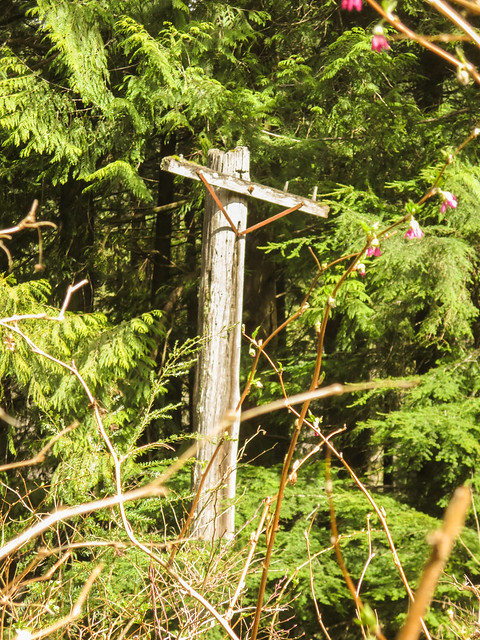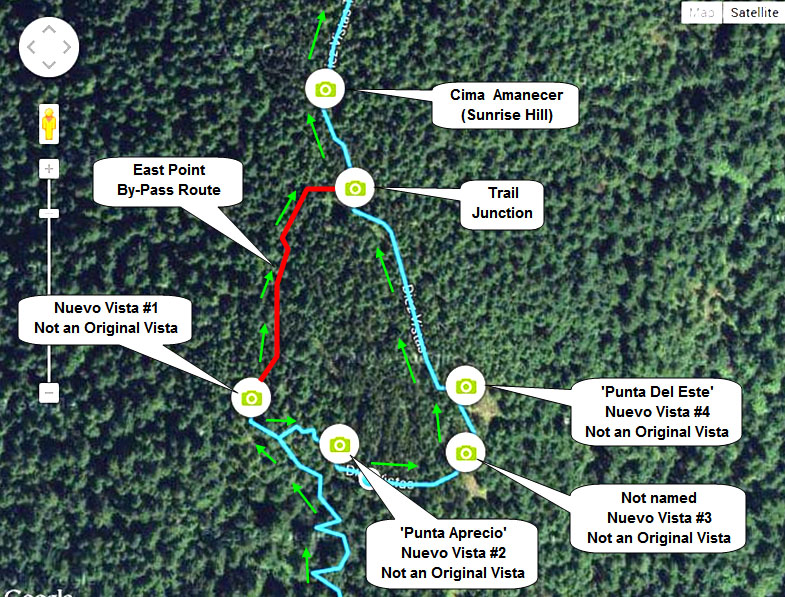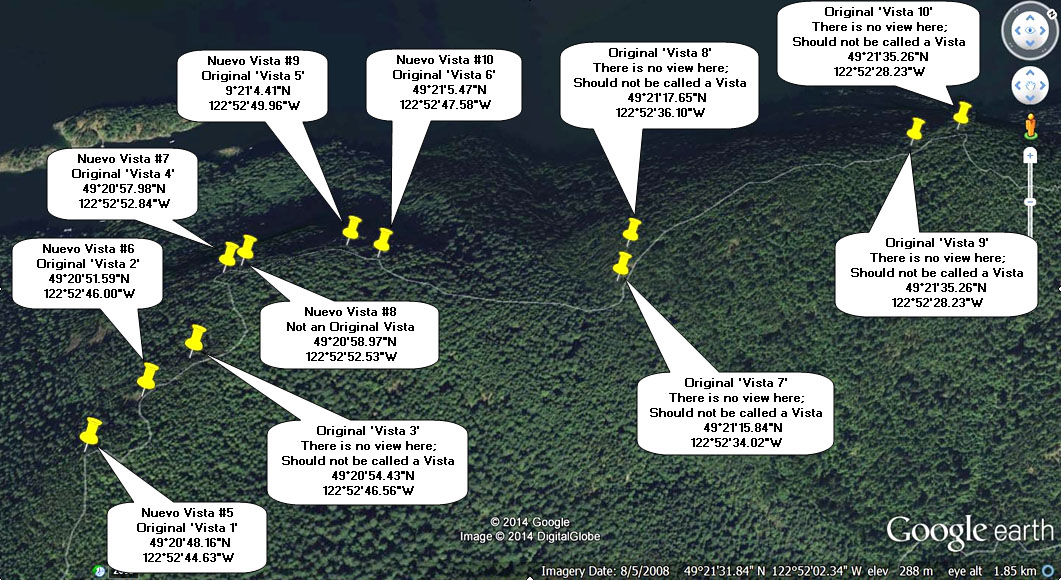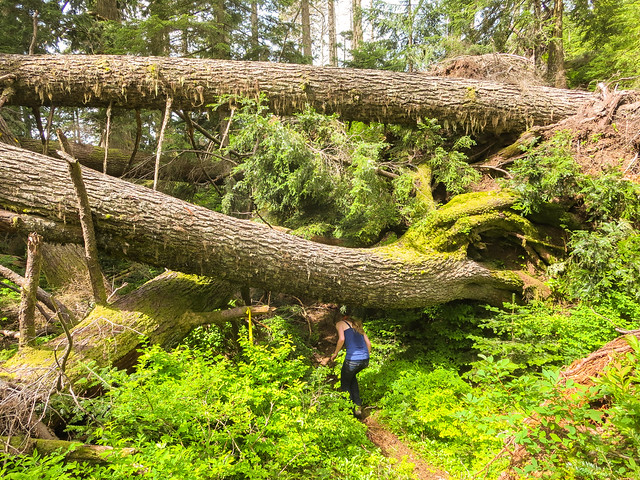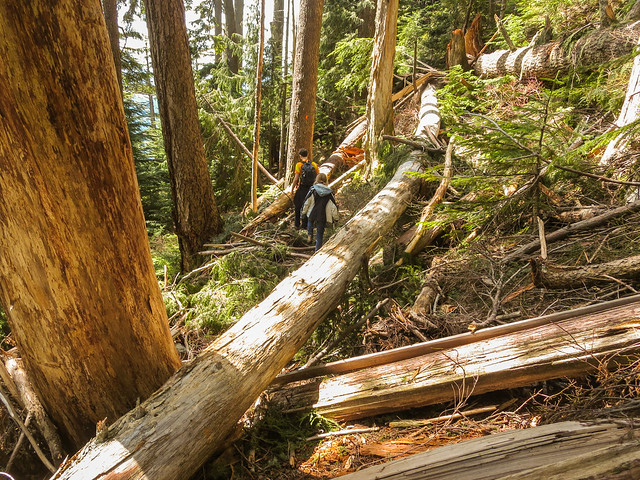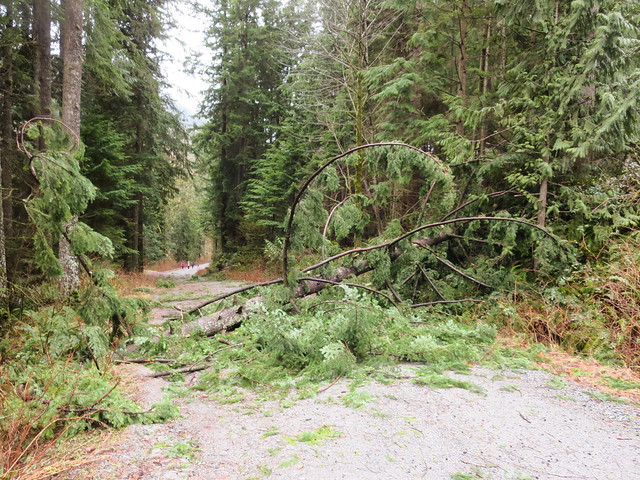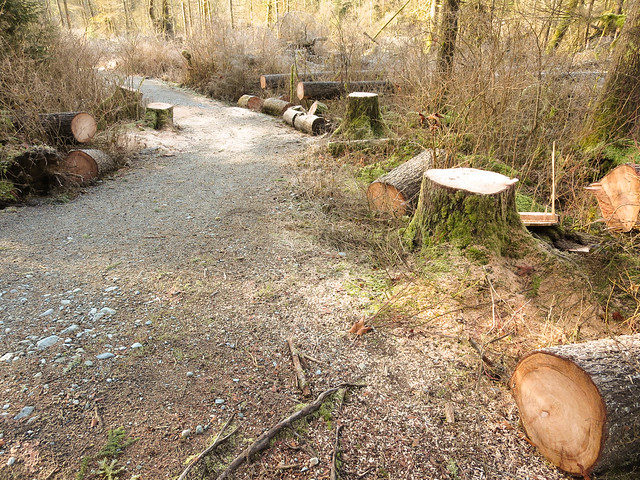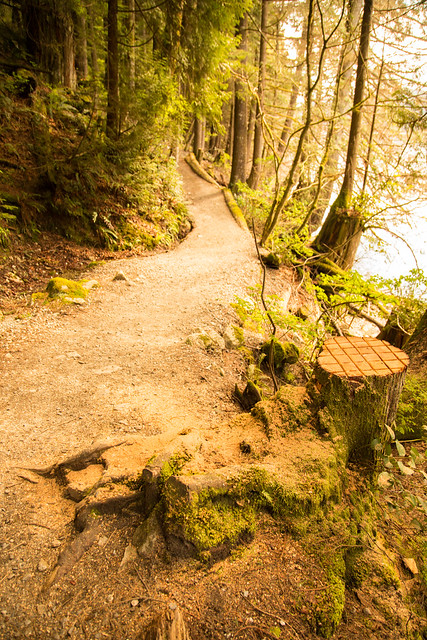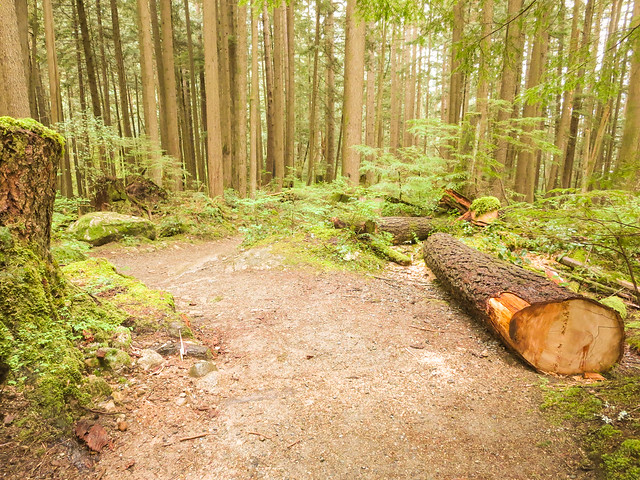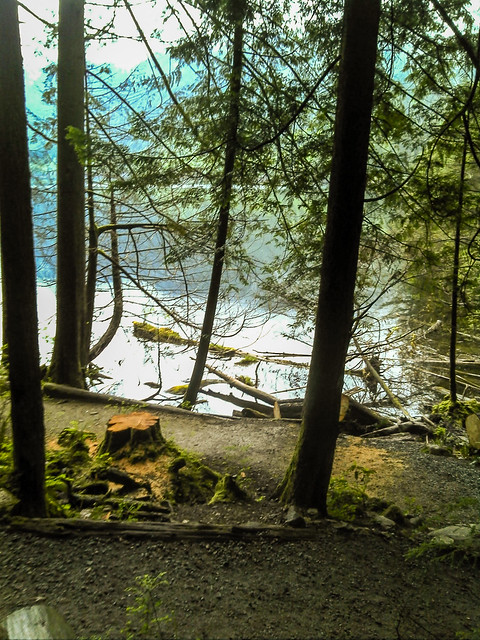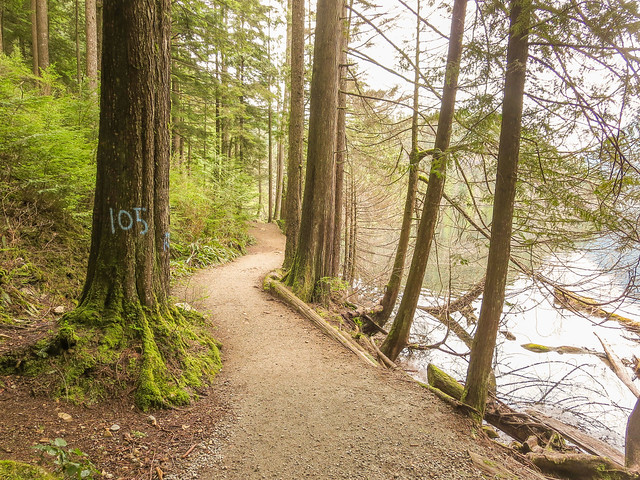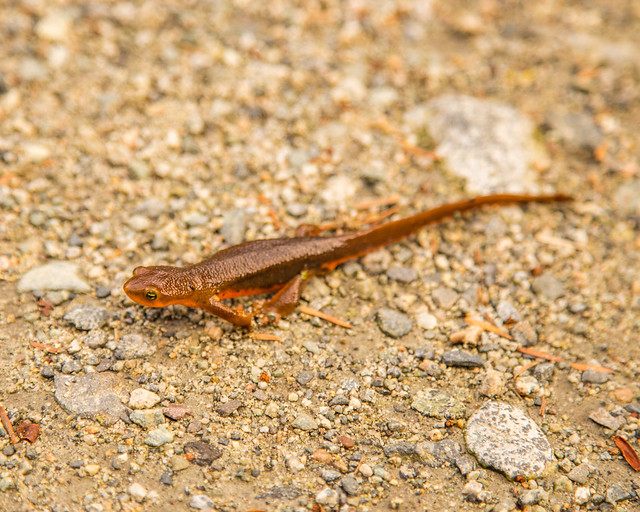Industrial activities have been occurring at Buntzen Lake since the early 1900s. The activities include: building of the tunnel, dam, penstocks, pumphouses, and electrical transmission lines. During my many hikes in the area, I have seen several examples of what I call industrial decay.
Below is a discarded and broken ceramic insulator I saw on Pumphouse Road…
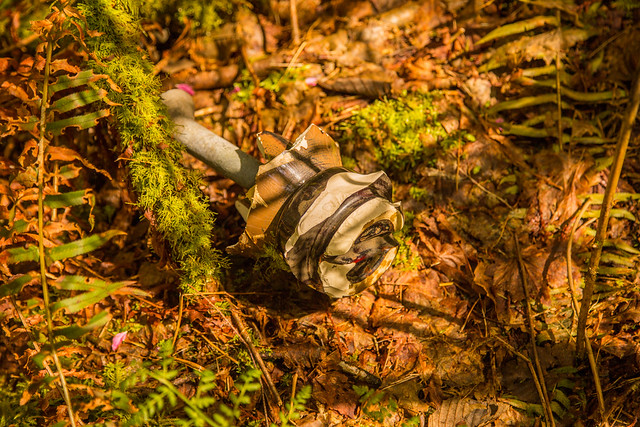
Near the pumphouse, you can see the old pipeline exiting this 25 m metal cylindrical tube
I think its some sort of back flow prevention…
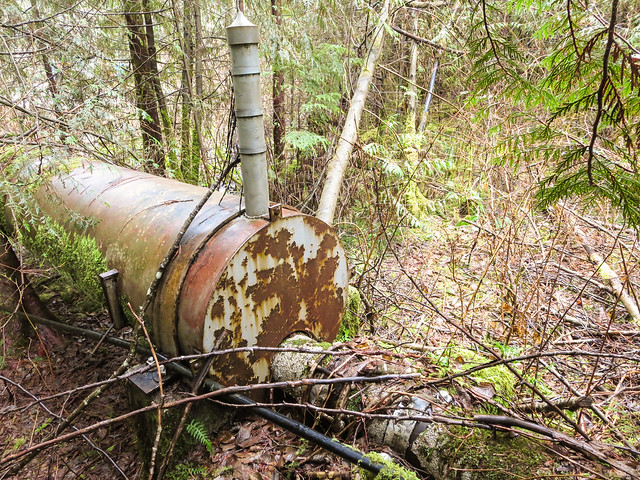
Next is a detail view of something on the top of the above shown cylinder…
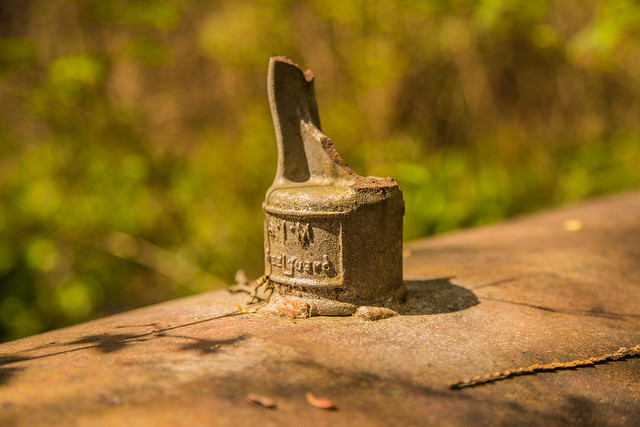
The area around north beach was recently (May 2014) scanned for artifacts by someone and the artifacts were on display on the memorial. I think this is very cool. Below is a photo of the artifacts…

There is a shortcut from Diez Vistas Trail to Lakeview Trail, following a creek.
To my surprise, I saw this discarded industrial metal drum…
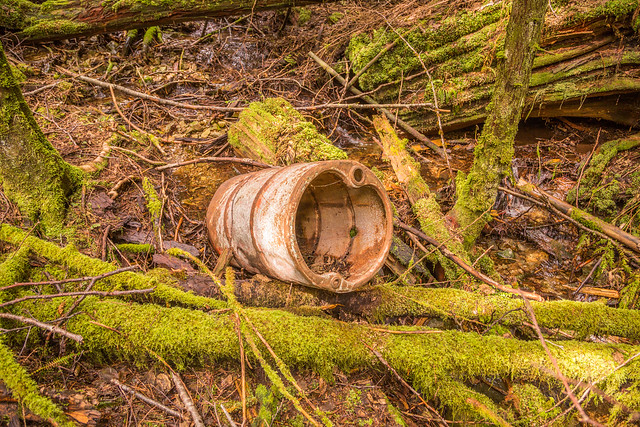
Close to the dam, I found these chunks of metal, which may have been sections of the original penstocks…
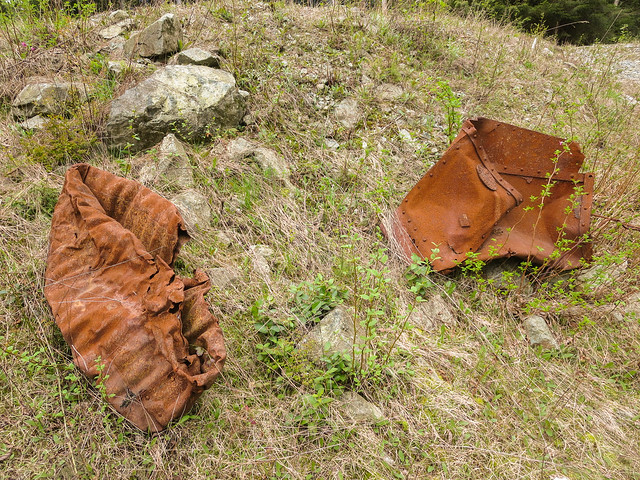
And here is a detail view of the manufacturer’s plate;
It reads… ‘BC Iron Works Vancouver, BC’…

Below is a section of the old water pipeline that was built in the early 1960s…
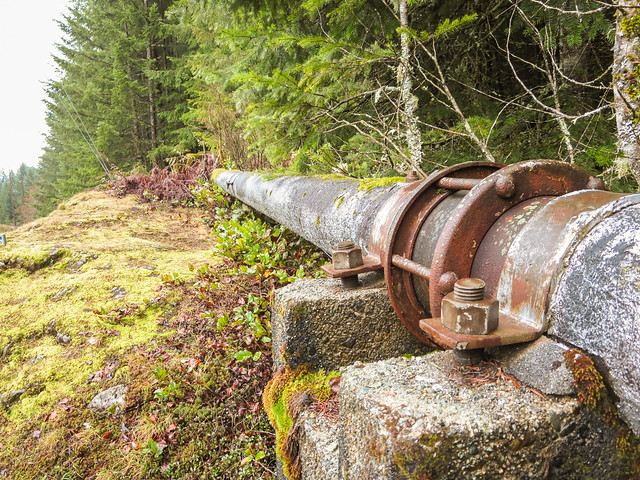
And here’s an interesting apparatus on a section of the pipeline…
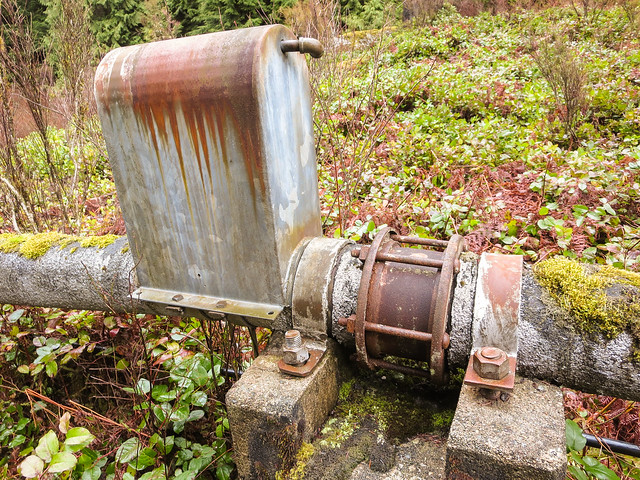
Below are some old concrete hydro pole stands…

And next is a detail shot of rusty bolts on a hydro pole stand…
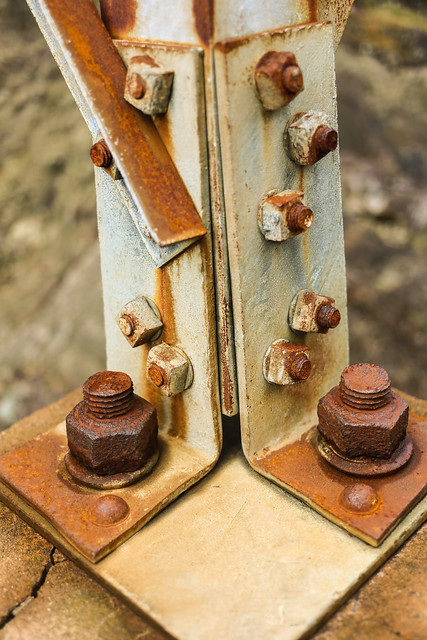
Here’s another photo of redundant hydro pole stands…
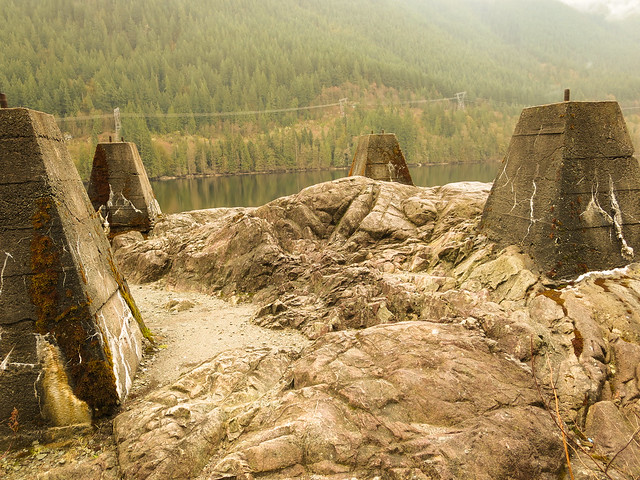
I saw this old wooden hydro pole on the Old Buntzen lake Trail…
